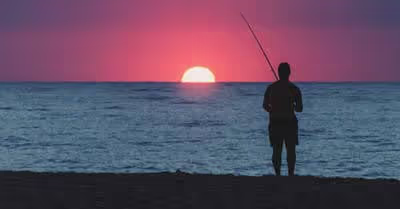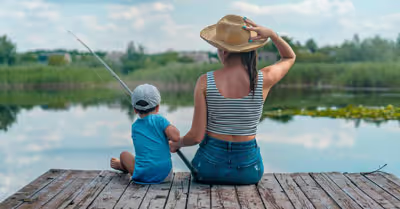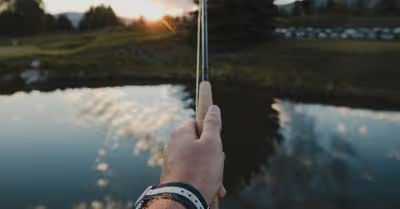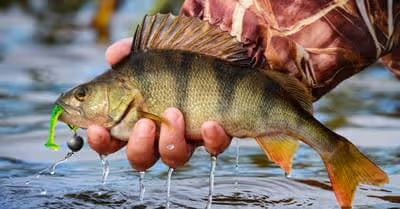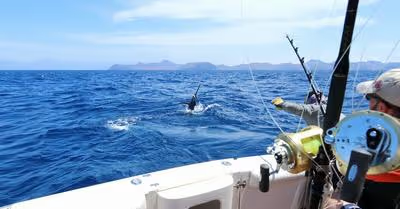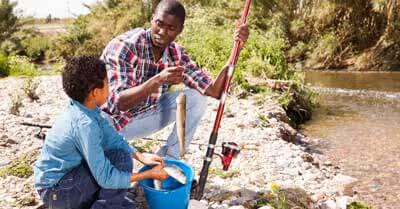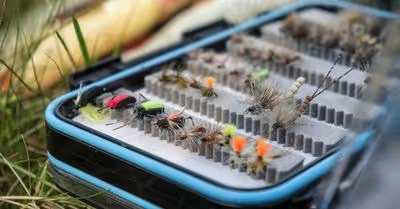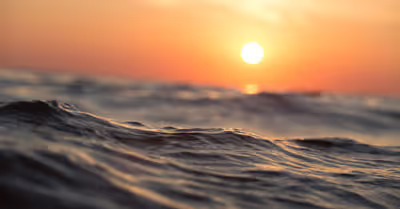Table of Contents
Benefits of Kayak Fishing
Kayak fishing can offer good and memorable experience for all anglers. First of all, a kayak is very portable, which makes it very easy to transport to the waters (more on this later). Unlike your typical fishing boat, a kayak can give you a lot more access to the water. In other words, a kayak enables you to reach far-flung places on the water where normal boats cannot access. And because fish are known to love these secluded places, kayak fishing affords you the chance of accessing fish species in such areas.
Again, kayaks are quieter than normal boats. Kayaks do not use engines or motors so you’ll have to paddle your way while fishing. As such, the kayak doesn’t draw a lot of water and can be an excellent way of sneaking up on fish. They’re also low and closer to the water surface, which is perfect if you don’t want to scare the fish away with those big and hugely roaring fishing boats.
Preparing for Kayak Fishing
Let’s look at some tips that will make kayak fishing more enjoyable.
1. Choose the Right Type of Kayak
Selecting the right type of kayak is of great importance if you want to have a successful kayak fishing trip. The most important things to keep in mind are the size and width of the kayak. Most kayaks measure between 10 and 14 feet. You can consider going for a shorter kayak since they’re a lot easier to maneuver and are perfect if you’ll be fishing alone.
Again, it’s advisable to go for a wide-bottomed kayak as it gives you more stability while fishing. You should also go for a sit-on-top kayak as it tends to be more fishing-friendly. Keep in mind that kayak fishing involves fishing while sitting so you may want a seat that makes you comfortable sitting during a long day on the water. The seat should also elevate you to look down at the water and to throw the fishing line farther away from the kayak. You should also look for a kayak that offers additional features such as extra storage space and rod holders.
Here are the features to look for when choosing a kayak for your fishing escapades:
- Elevated seat
- Multiple rods and paddle holders
- Deck storage and enclosed storage
- Fishfinder or GPS mount
- Retractable pedal power propeller
2. Choose the Right Paddle
When it comes to choosing the right paddle for your kayak fishing, it’s crucial to go for a paddle with an overall length that enables you to reach the water comfortably. It should neither be too long nor too short. A good length to start with is a paddle measuring 250 centimeters.
3. Have an Anchor
Kayaks are generally lightweight and can be blown away by the wind or currents. As a serious angler, you should consider bringing with you an anchor to prevent your kayak from drifting. Consider getting a foldable anchor weighing between 1.5 and 4 lbs and a rope measuring 75 ft. although you may need more length if you’ll be fishing in very deep waters.
While lighter anchors work perfectly in most situations, you can go for a heavier anchor if you’re planning to fish on rough waters. You can also add a cleat hitch to your kayak to allow you to tie the anchor.
4. Avoid Expensive Spinning Reel Rods
Like many anglers, you probably have your favorite fishing rod that you aren’t prepared to lose and so you shouldn’t bring it for your kayak fishing trip. Instead, pick an affordable fishing rod that won’t leave you devastated even if you were to lose it. When buying such a fishing rod, make sure that it’s lightweight and easy to set up. A carbon fiber fishing rod that’s nearly half the length of the kayak can be good for the start. The spinning reel should also be lightweight. The idea here is that your rod and reel should be lightweight as you’ll be casting while sitting and so you don’t want something that needs a lot of energy.
A detachable rod can also be great for easier transportation to and from your kayak fishing trip. Again, the rod should be rust-resistant as it will get wet even if your kayak doesn’t flip.
5. Have a Personal Floating Device (PFD)
There’s nothing more important than your safety not just when kayak fishing but whenever out there on the water. For this reason, you should ALWAYS wear a PFD or a life jacket to help you stay afloat if anything happens. When choosing a PFD, make sure that it’s meant for kayak fishing as it should have small compartments to help you carry lures and other stuff.
It’s also important to dress appropriately when on a kayak fishing trip. If you’re planning to fish in wide-open areas, keep in mind that you’ll be exposed to a lot of heat and sun. As such, you may have to carry sunscreen, lots of drinking water, have sunglasses, wear a hat, as well as a lightweight long-sleeved shirt. Again, you should have a wetsuit to keep you warm when the temperatures are cold.
6. Transporting Your Kayak to and from the Water Body
Kayaks are generally portable and lightweight. But this doesn’t mean you can carry them over your shoulders to and from the water body. Instead, you should consider using a pickup truck or van to conveniently transport the kayak to your fishing location. You can also consider strapping the kayak on the deck of a larger boat if you’re planning to get to distant water.
Fishing from Kayak Tips
From mastering kayak control tricks to learning the mechanics of casting and reeling from a kayak, there are some crucial fishing from kayak tips that you must have.
7. Learn How to Cast and Paddle with One Hand
This is perhaps one of the toughest adjustments that you’ll have to make if you’re used to fishing from either a boat or from the bank. Kayaks are typically less stable and do not have enough room for you to stand and make the standard two-hand cast or reel. This means that you’ll have to learn how to cast with one hand, especially if the kayak doesn’t have a pedal power. While using one hand to cast may seem quite challenging in the beginning, you’ll get used to it if you practice more regularly.
Kayak fishing also means that you might have to learn to paddle with one hand to make it a success. The rhythm needed to paddle with two hands is easy but keep in mind that you may find yourself in a situation where you have a bite on your line and have to fight the fish with one hand while steering the kayak on the other side or even attempting to avoid a collision with an overhanging tree branch.
8. Learn to Use Your Feet
Surprisingly, some scenarios may require you to master how to use your feet when kayak fishing. You may have to use your feet if you’re fishing in shallow waters and have to drift or steer the kayak from certain areas. For instance, you can stick your foot out and steer the kayak from a log or an obstacle while you’re busy using your hands to fish.
9. Fine-tune Your Position when Casting
Needless to say, it’s almost impossible to cast your rod and paddle the kayak at the same time. This is essentially why choosing a kayak with pedal power is fundamental for enjoyable kayak fishing. All in all, you must fine-tune your sitting position so that you can perfectly see where you want to cast to. This will ensure that you do not drift farther from where you intend to cast. If anything, you can consider using the anchor to remain right at that spot.
10. Know the Fish to Target and Come with the Right Baits and Lures
The main feature of a kayak is that it has limited space that may not be enough for your entire tackle box. As such, you should know the type of fish you’re targeting so that you can carry with you the right baits and lures. It’s always advisable to visit the area before your fishing trip possibly on a boat to get an idea of what to expect. You also need to research on the type of fish that are available in the area so that you can carry specific lures and bait. This is especially important if you don’t want to weigh down your kayak.
When it comes to choosing the right lures for kayak fishing, it’s generally advisable that you go for versatile and easy-to-use lures. This will help you in avoiding re-rigging or retying. You can also use a fish finder gadget to locate where the fish are.
Catching Fish from a Kayak
An experienced kayak angler will tell you that kayak fishing is all about setting your hook properly, casting at the right place, and staying focused. When you have a bite on your line, it’s important to keep a tight line. You can do this by holding the line vertically above your head while ensuring that your paddles are secure. You should also watch out for trees or branches that can snug your line just above your head.
If you’ve anchored your kayak, you should glide stealthily away from a school of fish since you don’t want to scare them away. For this reason, you must leave some slack line to offer you a little distance. Generally, anchoring your fish will allow you to stand straight on the kayak, keep the rod horizontally in front of you and draw it back quickly when you have a bite. You should also remember that you don’t have much space so you’ll be doing almost everything in close quarters.
When reeling, hold up the rod vertically above your head. You shouldn’t forget to leave some slack line so that the line doesn’t snap. You have to keep the balance by staying at the center of the boat. You don’t have to lean much as you may end up in the water. But even if you do, you should ALWAYS have your life jacket on and don’t panic. Just bring back the kayak to its normal position and raise yourself into the kayak. More importantly, you should forget to carry a whistle or a sound device to alert others in case it all goes wrong and you need help.
To this end, we have to admit that kayak fishing is a thrilling and enjoyable way to wet your lines. Whether you’re a seasoned angler or a beginner, we recommend that you give it a try. With the above tips, you should be good to go but make sure that your safety comes first.
Recent Articles



